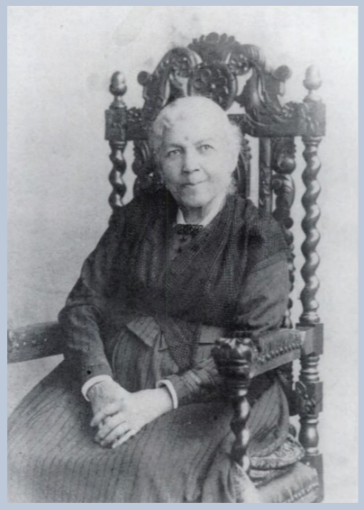4.19: Harriet Jacobs (c. 1813–1897)
- Page ID
- 57481
Harriet Jacobs was born into slavery in Edenton, North Carolina, around 1813. Her father was probably a skilled carpenter allowed by his master to hire himself out. Though he and Jacobs’ mother were owned by different masters, they were allowed to live as a couple with their children. Jacobs’ maternal grandmother, Molly Horniblow, was a freed slave who owned a house in Edenton. After her mother died, Jacobs lived as slave in the household of Margaret Horniblow, who taught Jacobs to read. Upon Margaret Horniblow’s death, Jacobs was willed to the daughter of Dr. James Norcom and brought into his household. He subjected her to relentless sexual harassment. His wife, out of jealousy, subjected Jacobs to physical abuse.

Image \(\PageIndex{1}\): Harriet Ann Jacobs
Jacobs defied Norcom by taking Samuel Tredwell Sawyer, a white lawyer, as her lover. She had two children, a boy and a girl. As punishment for Jacobs’s prolonged defiance, Norcom sent her out to work on his plantation, where he also threatened to send her children. She ran away and hid from Norcom for almost seven years in her maternal grandmother’s attic. Sawyer bought their children but did not free them (as Jacobs wrote that he had promised to do).
In 1842, Jacobs escaped to the North, later followed there by her children. She gave domestic service to writer and editor Nathaniel Parker Willis (Fanny Fern’s brother). Willis’s second wife would buy and emancipate Jacobs in 1852. Before that freedom, Jacobs was vulnerable to being captured and returned to Norcom. To avoid this danger, she went to Rochester, New York, where her brother John S. Jacobs (1815–1875) was also a fugitive slave who worked for abolition.
Starting in 1849, she worked for the American Anti-Slavery Society office located in the same building as The North Star, the anti-slavery newspaper founded by Frederick Douglass. Jacobs took full advantage of the literature available where she worked. She also became friends with Amy Post, a Quaker reformer, who encouraged Jacobs to contribute to anti-slavery literature by writing her own story. After five years, Jacobs completed Incidents in the Life of a Slave Girl in 1858. Aware of the cult of domesticity and sentimental literature—as exemplified by Stowe’s Uncle Tom’s Cabin—Jacobs’ story emphasized how slavery betrayed the highest ideals of womanhood and woman’s purity, not only the womanhood of female slaves but also of slave mistresses. She described the peculiar horrors of her situation, in being forced to give herself sexually to one man to avoid being sexually abused by another, and in having her children bought by their white father to help them escape their legal master. Lydia Marie Child wrote the book’s preface and helped Jacobs have it published in Boston under the pseudonym of Linda Brent. It sold well until its message seemed to be obviated by the Civil War, but it gained renewed attention in the 1980s.

